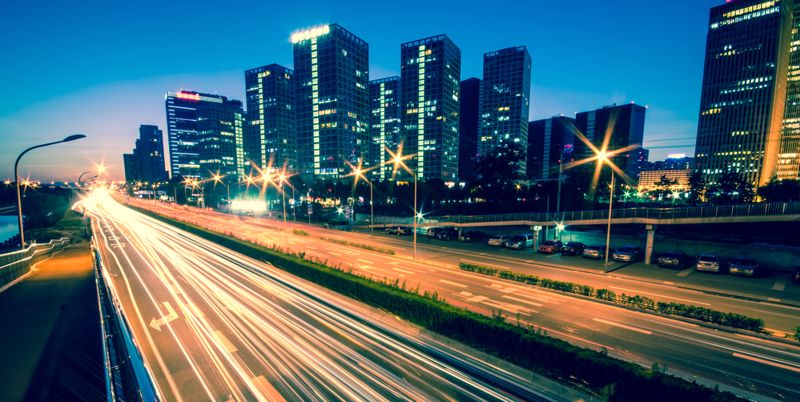Autonomous vehicles (AVs) could dramatically change how people get around, possibly bringing fundamental changes to the way roads are currently designed. AVs' use of detection sensors and GPS tracking to navigate could eliminate the need for traffic signals, road signs and street markers, while the roads themselves could become smaller and narrower to accommodate fewer vehicles.
Minimizing the amount of land major throughways occupy would open space for other uses, including pedestrian walkways and bicycle paths, creating more lanes conducive to non-car traffic. Read below to get a more detailed look at how AVs could transform road traffic in communities across the world.
Smaller roads for fewer cars
Most driverless cars are expected to be communal, minimizing the need for privately-owned cars and vastly reducing the total number of vehicles on the streets at any given time. More than that, highly-functioning AVs will virtually eliminate the risk of human error, allowing them to drive closer together.
The combination of these changes will drastically reduce the need for massive multi-lane roads, giving city planners the freedom to construct tighter throughways better fit to serve a smaller number of more efficient vehicles.
Driverless vehicles are equipped with both artificial intelligence and highly sophisticated light and radio sensor systems, as National Affairs magazine describes. They rely on this technology to detect what is in their immediate vicinity to make turns, stop at intersections, switch lanes and avoid pedestrians, which could make traditional road signs and traffic lights obsolete, according to Short Elliott Hendrickson. With in-built GPS tracking to help AVs navigate complex road and highway systems, direction signs might also no longer be necessary. All of this could mean clearer, less cluttered and more discreet roads.
Make way for pedestrians
With fewer human drivers on the road, city planners could find that they can focus less on their needs and more on those of pedestrians. Crosswalks are commonly placed at intersections because that's where they're least disruptive of traffic and less likely to cause accident or injury. But because driverless vehicles have a computerized ability to detect pedestrians, city planners might have more leeway to place crosswalks in spaces other than intersections, especially areas that are more convenient for pedestrians.
The simplification of the roads described above could also open up more space for pedestrian traffic, including wider walkways and more bicycle lanes. With more Americans relying on means other than cars to commute to work, according to a Gallup survey, there is a greater need to accommodate non-car traffic. Similar to what happened in many cities around the world as urban driving became less popular, roads will become cleaner, quieter and less congested.

Smarter cars, smarter roads
One of the most revolutionary changes that could result from the introduction of AVs is smart roads. Currently, driverless vehicles are being designed for compatibility with traditional road infrastructure, but city engineers may choose instead to incorporate smart technology into the roads themselves to allow AVs to communicate directly with them. The roads could collect data from each vehicle and send relevant information back, giving them a clearer picture of traffic and making the roads safer and more efficient.
But pedestrians may find the most convenience in smart roads. Above, we described how city planners could choose to place crosswalks where they are most convenient for pedestrians as opposed to drivers.
If AVs are communicating with the roads themselves, however, technology could be developed which might allow pedestrians to cross the road without the use of crosswalks at all. By signaling that they want to cross, perhaps through an app on a smart device, the road will process this information and send it to all nearby AVs, causing them to stop and allowing pedestrians to cross, according to Teague.
Reimagining the future
Driverless vehicles look ready to radically transform road design and infrastructure, possibly making them cleaner, safer, more compact and more efficient. These changes could release much of the pressure on community spaces, reducing downtown traffic and opening city centers for other uses.
High-quality and effective brakes are vital to ensuring that AVs operate at the level of efficiency they are intended to. Greening Testing Laboratories is a fully certified brake testing lab that provides a variety of brake testing services worldwide. Contact Greening for complimentary consultation.
